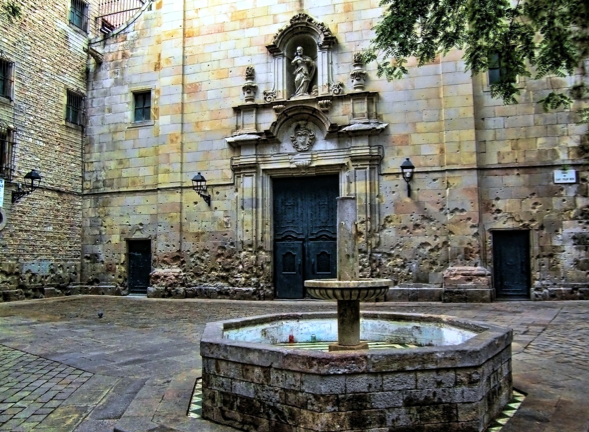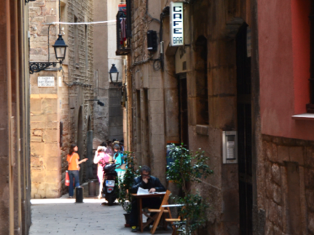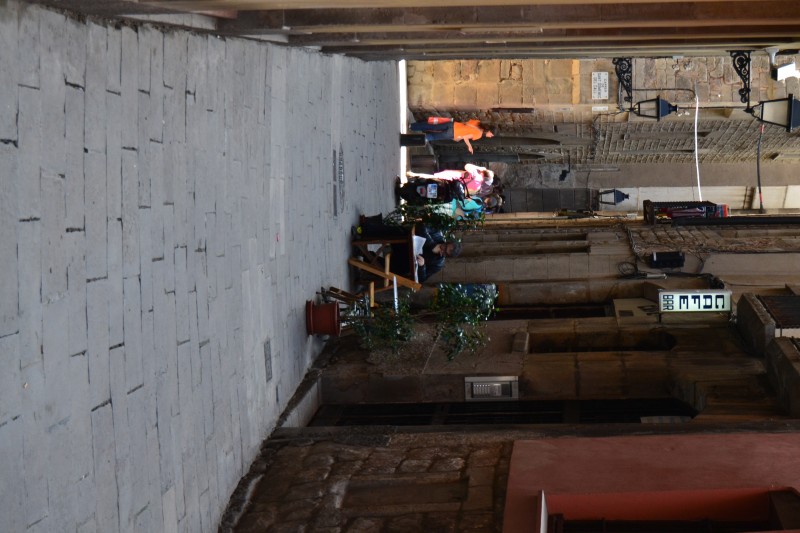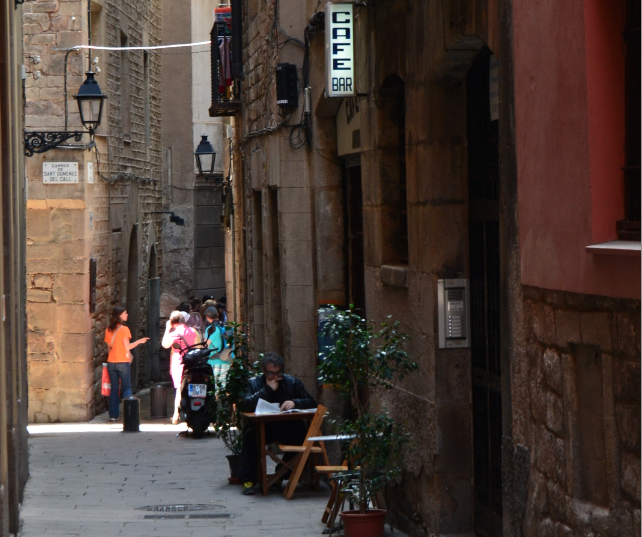Call Jueu
El segle XVIII és el gran moment del comerç del llibre al carrer Llibreteria. Aquesta via arribà a concentrar 48 negocis d’aquest tipus. Al costat de mar del carrer
Jewish life in Barcelona. “Call Major” and “Call Menor” (Note on Call, Call is the name of the old Jewish settlement in Barcelona , it means "narrow street" or "lane" and it was used for all the narrow streets in the two "Call" areas called "Call Major" and "Call Menor".) . It is known that Jews lived in Barcelona from the 10th century; however the first documented records of Jewish life in the city start in the 12th Century. The Call, or the Jewish quarter was located near the Cathedral, between the streets of Santa Eulalia, Sant Sever, Banys Nous and Sant Honorat (although there were also some houses in Carrer del Bisbe ). It was also bordered by a street, later renamed “Carrer del Call”. . In 1257, this area was too small for the amount of Jewish people living in the city so they expanded to a new Call. This Call was named Call Menor, Angela’s Call or Sanahuja’s Call. This Call bordered by the streets named today as Avinyó, Raurich and Ferran. In the 14th Century, about 5000 Jews were living in Barcelona. The term “Call” is derived from the Latin word that means “narrow street” or “alleway”. The Jewish people that lived in Barcelona were mainly based around this area and they had everything they needed to live according to their religious and cultural traditions. They could follow their specific diet requirements, their code of conduct and celebrate their rituals as per their precepts. . QR Gothic route- The Jewish Quarter Standing at the entrance of Carrer de Sant Honorat, with our back to Plaça de Sant Jaume, we are at the same spot where the gates of the “Call” were. However, we need to think that the view in the Medieval period was very different from the view today. Nor the Palau de la Generalitat nor the Ajuntament (the Town Hall) had been built yet. The Plaça Sant Jaume was the continuation of Carrer Llibreteria and Carrer del Call. The square was a slightly wider section and it was where the San Jaume church was located between several other buildings. . Looking to our left, we would have seen the Castell Nou (New Castle), a medieval fortress built where one of the Roman wall gates was. The castle was where today we find the block limited by the streets of Call, Avinyó and Ferran. The last remains of the castle, also known as Torre d’Hèrcules or Torre de Cató, were destroyed in the 19th century when the Carrer Ferran extension was built. At the small square formed at the castle end of Carrer del Call, where the street was wider, was the Jewish bakery. The other gate is at the beginning of carrer Sant Domènec, at the corner of carrer del Call.









